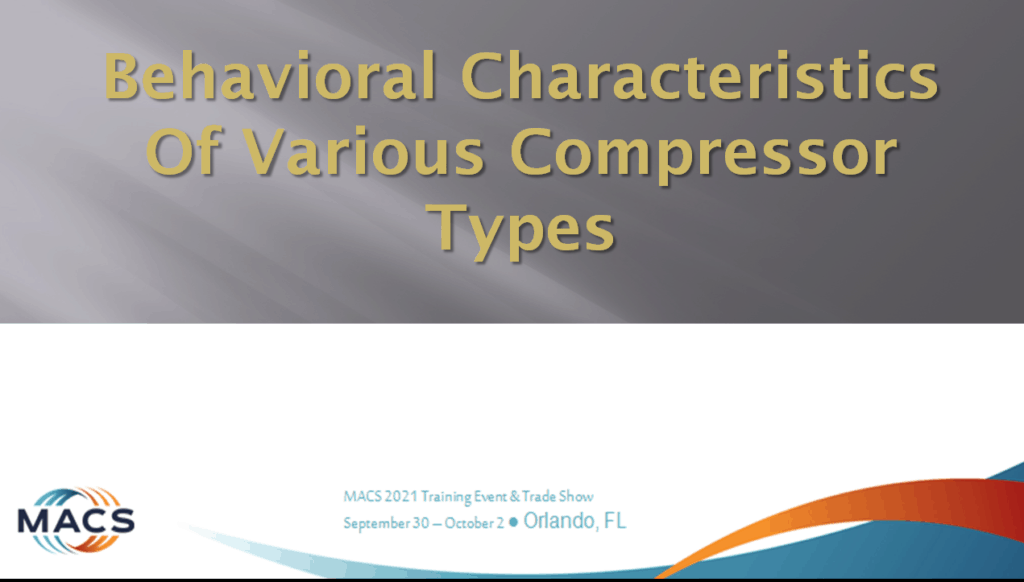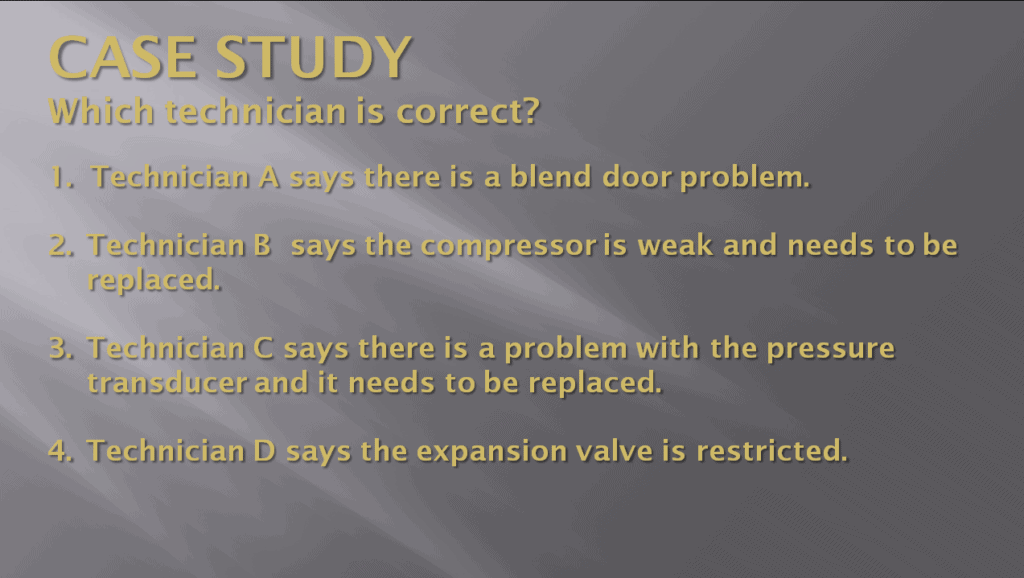Behavioral characteristics of various compressor types
By Richard Hawkins, MACS contributor
If you are attending the MACS 2021 Training Event and Trade Show in Orlando, FL next week, you are cordially invited to attend a class I will be conducting. The title is Behavioral Characteristics of Various Compressor Types. There is also information in the class about how to identify compressor types. It will be held twice on Thursday September 30th. The first class will begin at 9:45 am and run until 11:45 am. The second class will start at 2:45 pm and run until 4:15 pm.
When faced with a challenging A/C system problem, knowing what type of compressor you are dealing with can help streamline the diagnosis process. This is because different types of compressors exhibit different behavioral characteristics. See picture 1.

Picture #1: The first slide from the class.
The class starts off with a case study on a vehicle I encountered years ago that convinced me of the importance of this information. It is followed up with some ASE style test questions. Then it will branch off into discussion about how systems with different style compressors would perform with the same problem present and what pressures and temperature readings would expect to be encountered. Please see picture #2 below for the case study information.

Picture #2: Case study information. For clarification purposes, a “pressure controlled variable displacement compressor ” is one that utilizes a non-electronic control valve. It is sometimes called a mechanical control valve. Examples of these compressors would be the GM CVC and Sanden SD7V16 units.
Please see picture #3 for below for the case study questions.

Picture #3: Case study questions.
The correct answer to the question will be provided in the first blog article published after the class has been held along with information on why the incorrect answers are incorrect.

Picture #4: Your responses on the correct answer are invited. Please feel free to include the reason for your answer and any additional comments.
As indicated in the slide, your participation on providing the correct answer is encouraged. The post comments section is located below at the end of the article. Additional slides and information from the class will be published in blog articles in the weeks following the class.

Leave a Reply